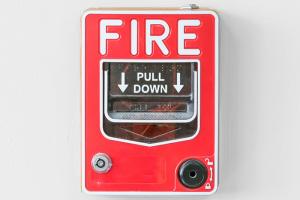Calculating energy savings
Whether your energy conservation program consists of retrofitting existing facilities or investing in renewable energy resources, you will need to estimate, measure and verify your results. For many health systems, quickly and dramatically improving the bottom line is becoming increasingly important. Houston-based Memorial Hermann health system, for example, has saved approximately $10 million a year in energy costs over the past five years, primarily by targeting low-hanging fruit or easy-to-remedy inefficiencies, says Terry M. Scott, SASHE, CHFM, CHSP, the director of engineering and construction services for three of the organization's 14 hospitals.
At Memorial Hermann, which engages in continuous energy benchmarking, a multidisciplinary energy committee meets every other week to assess building performance, as well as the likely return on investment (ROI) of potential programs and purchases. "If it's not worth the money, we're not going to do it," says Scott, who is the president-elect of the American Society for Healthcare Engineering (ASHE). "We usually get a one- or two-year payback on energy-related investments."
Other hospitals and health networks also make reductions in their greenhouse gas emissions a priority, emphasizing how this enhances public health. What's more, in today's more environmentally conscious society, energy-management initiatives can build enthusiasm among patients and hospital employees while raising the profile of health systems in the communities they serve, says Jon Utech, MS OD, LEED AP, senior director of Cleveland Clinic's Office for a Healthy Environment.
Health systems have varying energy-management goals and objectives, notes Fazil Shaikh, a sales manager with Princeton, N.J.-based NRG Energy. For instance, Scott & White Healthcare contracted with Cirro Energy Services, now part of NRG, specifically to address inefficiencies in compliance testing of its disparate assortment of backup generators. Scott & White had been manually testing for compliance generators of different ages, makes and models spread across multiple sites and campuses.
"Working with a partner company, Blue Pillar, we introduced a solution: Digitize all of those pieces of equipment in the emergency power management system," Shaikh says. "By connecting all of the data and controlling it from a central user interface, Scott & White could automate the testing, automate its compliance requirements and realize a significant amount of efficiency."
Cirro Energy Services also introduced Scott & White to emergency demand-response, an agreement to reduce electricity or transfer electric usage to backup generators when rolling blackouts are imminent — a program that results in substantial cost savings for participants and provides advance notice of potential instability on the power grid. This knowledge can be extremely valuable for power-critical businesses like hospitals.
"At the time, [about two years ago], the payback for digitizing the generators if Scott & White had not added demand-response would have been three to five years," Shaikh says. "But because we were able to leverage the emergency demand-response opportunities, the deal was cash-flow positive for the health system in the first year."
Shaikh has found that clients' chief financial officers are more likely to approve energy-management projects with a payback of two years or less. On capital-intense, alternative energy projects, his team can sometimes minimize clients' up front investment by building, owning and operating on-site power-generation systems in exchange for long-term power purchase agreements (PPAs). NRG Business also offer options to purchase, own and operate existing on-site systems through a similar structure.
Such is the case with Oakland, Calif.-based Kaiser Permanente, which has contracted with another NRG affiliate, NRG Renew, to construct on-site solar electricity generators at more than 100 of Kaiser's health care facilities. Because Kaiser will pay NRG Renew over a 20-year PPA, the health system is expected to save up to $4 million in the first year.
Measuring and verifying
Expected cost savings are not the same as actual results, however. The Department of Energy's (DOE’s) Advanced Energy Retrofit Guide — Healthcare Facilities devotes a chapter to the importance of measurement and verification (M&V), elaborating on guidelines from the DOE's International Performance Measurement and Verification Protocol (IPMVP).
Defining energy savings as the difference between energy use before and after a retrofit, with adjustments made for such independent variables as weather and building occupancy, the IPMVP describes several options for M&V, including retrofit isolation with full or partial measurement, whole facility measurement and calibrated simulation.
According to the DOE, health systems or hospitals that implement smaller-scale, energy-efficiency projects generally opt for retrofit isolation, which focuses on the impact of a specific undertaking on a piece of equipment or system. Health care institutions enacting comprehensive energy-management programs typically choose a whole-building approach, in which a facility's utility bills are compared before and after implementation.
Reducing emissions
While caring about reducing energy costs and being able to pass the savings on to its patients, Kaiser Permanente has made a major commitment to reduce greenhouse gas emissions by 30 percent between 2008 and 2020, notes Seth Baruch, Kaiser's national director for energy and utilities. "Because of our renewable energy investments, such as solar and wind power, we're going to hit that goal three years early," he says.
Kaiser has a process for measuring its carbon dioxide emissions. "When we do our greenhouse gas reporting, we look at all of our CO2 emissions and our indirect emissions associated with electricity purchases," Baruch explains. "We calculate how many pounds of CO2 per megawatt-hour we are responsible for by consuming grid electricity.
"Every megawatt-hour served by a carbon-free resource such as solar and wind helps us to reduce our CO2 emissions."
The consequences of global warming range from increased death rates attributable to more intense and frequent heat waves to surges in insect-borne and water-borne illnesses, according to the National Institute of Environmental Health Sciences. By reducing its carbon footprint, Kaiser is thus helping to improve the well-being of individuals and populations on an international scale, Baruch says.
"When we talk about our energy investments," he notes, "we stress that not only are we saving money and helping to optimize the use of our members' money, but also we are addressing climate change and its impact on human health."
Other metrics can be used to gauge the success of hospitals' and health networks' energy-conservation initiatives. Striving to engage caregivers, Cleveland Clinic shares behind-the-scenes, energy-reduction stories on its intranet site. "We've gotten half a million hits from our caregivers," Utech says.
A participant in the DOE's Better Building Challenge, Cleveland Clinic has vowed to reduce its energy use intensity by 20 percent between 2010 and 2020 and is currently 9.4 percent below its baseline. To educate patients about its efforts, the health system is installing kiosks in its hospital lobbies that display each facility's Btus per sq. ft.
"As we reduce our energy use intensity, we're making the environment cleaner for our patients," Utech says. "We are making our patients healthier, which is the core of our mission as a health care provider."
This is the fourth in a series of articles on energy management.




